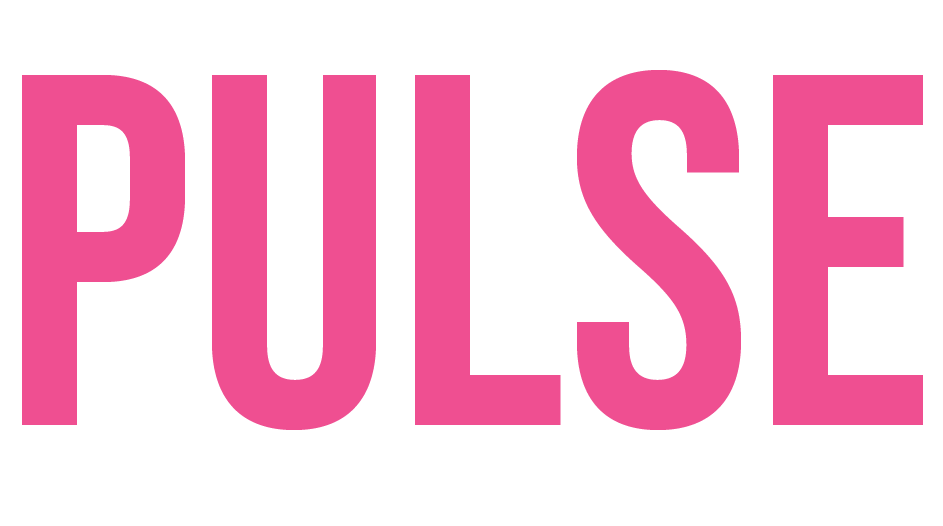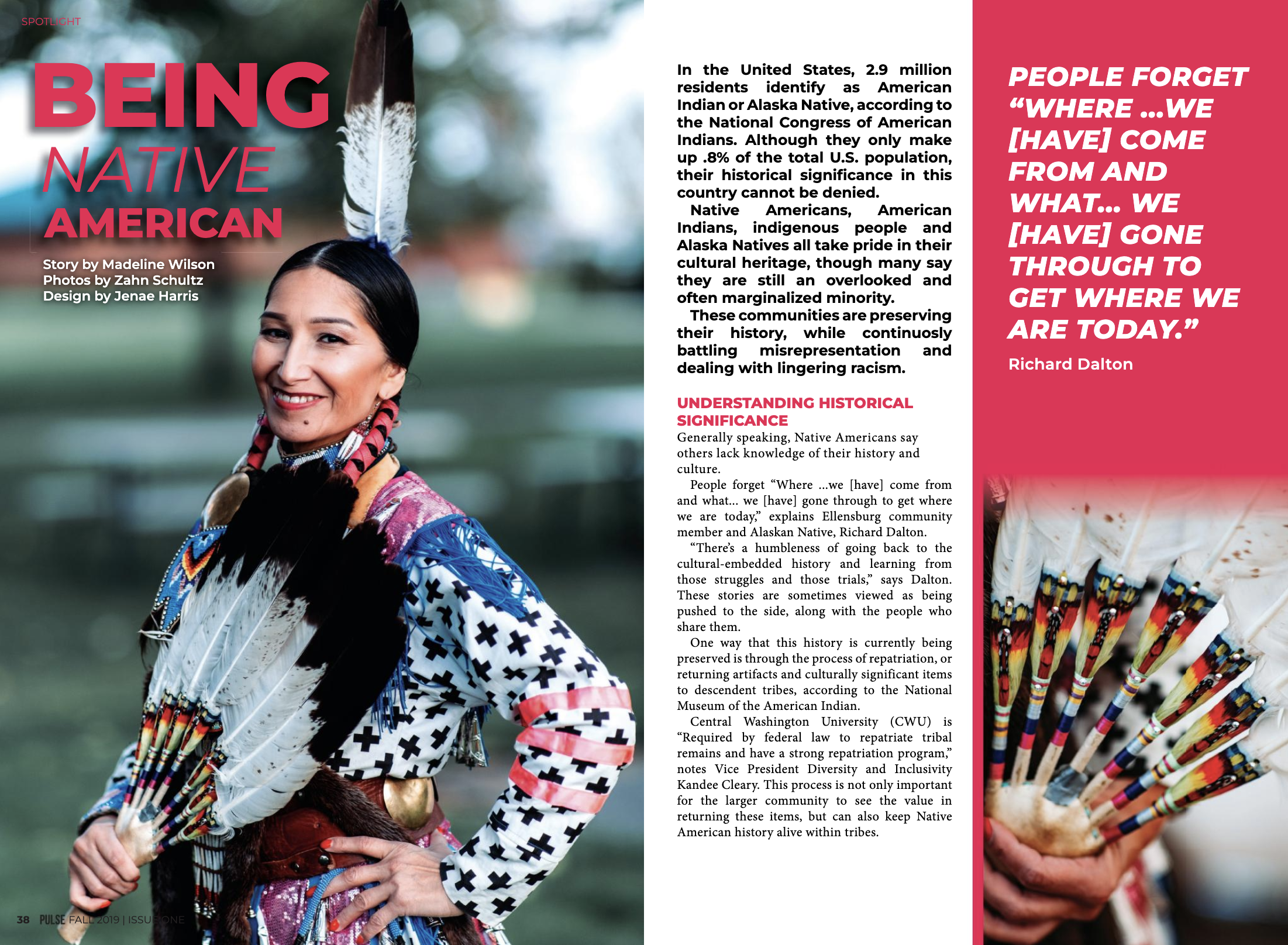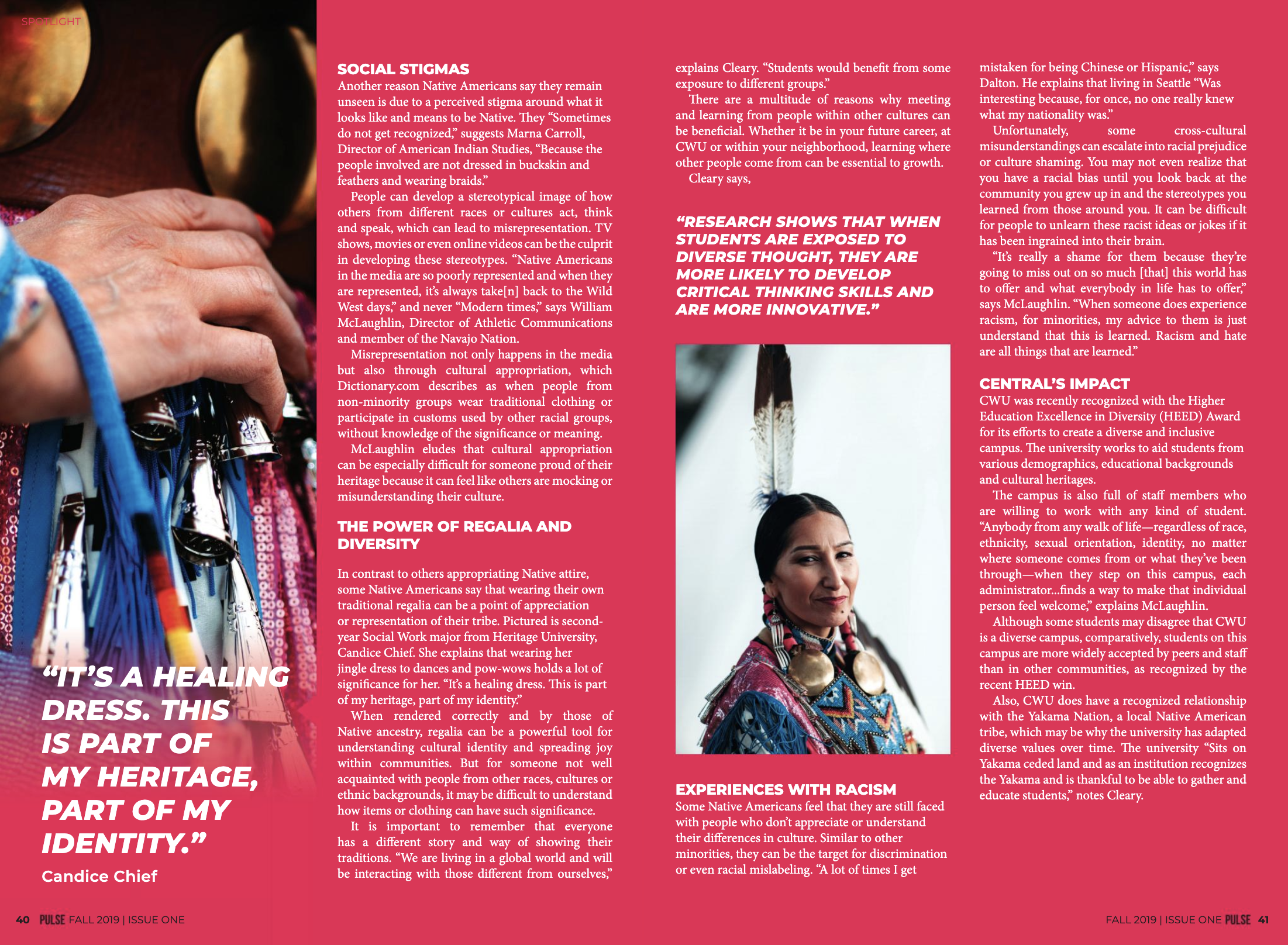Being Native American
Story by Madeline Wilson | Photos by Zahn Schultz | Design by Janae Harris
In the United States, 2.9 million residents identify as American Indian or Alaska Native, according to the National Congress of American Indians. Although they only make up .8% of the total U.S. population, their historical significance in this country cannot be denied.
Native Americans, American Indians, indigenous people and Alaska Natives all take pride in their cultural heritage, though many say they are still an overlooked and often marginalized minority.
These communities are preserving their history while continuously battling misrepresentation and cultural appropriation and dealing with lingering racism.
Understanding Historical Significance
Generally speaking, Native Americans say others lack knowledge of their history and culture.
People forget “where ...we [have] come from and what... we [have] gone through to get where we are today,” explains Ellensburg community member and Alaskan Native, Richard Dalton.
"There’s a humbleness of going back to the cultural-embedded history and learning from those struggles and those trials,” says Dalton. These stories are sometimes viewed as being pushed to the side along with the people who share them.
One way that this history is currently being preserved is through the process of repatriation, or returning artifacts and culturally significant items to descendent tribes, according to the National Museum of the American Indian.
Central Washington University (CWU) is “required by federal law to repatriate tribal remains and have a strong repatriation program,” notes Vice President Diversity and Inclusivity Kandee Cleary. This process is not only important for the larger community to see the value in returning these items, but can also keep Native American history alive within tribes.
Social Stigmas
Another reason Native Americans say they remain unseen is due to a perceived stigma around what it looks like and means to be Native. They "sometimes do not get recognized," suggests Marna Carroll, Director of American Indian Studies, “because the people involved are not dressed in buckskin and feathers and wearing braids.”
People can develop a stereotypical image of how others from different races or cultures act, think and speak, which can lead to misrepresentation. TV shows, movies or even online videos can be the culprit in developing these stereotypes. “Native Americans in the media are so poorly represented and when they are represented, it's always take[n] back to the Wild West days,” and never "modern times," says William McLaughlin, Director of Athletic Communications and a member of the Navajo Nation.
Misrepresentation not only happens in the media but also through cultural appropriation, which Dictionary.com describes as when people from non-minority groups wear traditional clothing or participate in customs used by other racial groups, without knowledge of the significance or meaning.
McLaughlin eludes that cultural appropriation can be especially difficult for someone proud of their heritage because it can feel like others are mocking or misunderstanding their culture.
The Power of Regalia and Diversity
In contrast to others appropriating Native attire, some Native Americans say that wearing their own traditional regalia can be a point of appreciation or representation of their tribe. Pictured is second-year Social Work major from Heritage University, Candice Chief. She explains that wearing her jingle dress to dances and pow-wows holds a lot of significance for her. “It's a healing dress. This is part of my heritage, part of my identity.”
When rendered correctly and by those of Native ancestry, regalia can be a powerful tool for understanding cultural identity and spreading joy within communities. But for someone not well acquainted with people from other races, cultures or ethnic backgrounds, it may be difficult to understand how items or clothing can have such significance.
It is important to remember that everyone has a different story and way of showing their traditions. “We are living in a global world and will be interacting with those different from ourselves," explains Cleary. "Students would benefit from some exposure to different groups.”
There are a multitude of reasons why meeting and learning from people within other cultures can be beneficial. Whether it be in your future career, at CWU or within your neighborhood, learning where other people come from can be essential to growth. Cleary says, research shows that when students are exposed to diverse thought, they are more likely to develop critical thinking skills and are more innovative.”
Experiences with Racism
Some Native Americans feel that they are still faced with people who don’t appreciate or understand their differences in culture. Similar to other minorities, they can be the target for discrimination or even racial mislabeling. “A lot of times I get mistaken for being Chinese or Hispanic," says Dalton. He explains that living in Seattle "was interesting because, for once, no one really knew what my nationality was.”
Unfortunately, some cross-cultural misunderstandings can escalate into racial prejudice or culture shaming. You may not even realize that you have a racial bias until you look back at the community you grew up in and the stereotypes you learned from those around you. It can be difficult for people to unlearn these racist ideas or jokes if it has been ingrained into their brain.
“It's really a shame for them because they're going to miss out on so much [that] this world has to offer and what everybody in life has to offer,” says McLaughlin. "When someone does experience racism, for minorities, my advice to them is just understand that this is learned. Racism and hate are all things that are learned.”
Central’s Impact
CWU was recently recognized with the Higher Education Excellence in Diversity (HEED) Award for its efforts to create a diverse and inclusive campus. The university works to aid students from various demographics, as noted by the recent HEED win in a press release from Public Affairs. Clubs and programs that seek to better the lives of those in the student body and in the community.
The campus is also full of staff members who are willing to work with any kind of student. “Anybody from any walk of life— regardless of race, ethnicity, sexual orientation, identity, no matter where someone comes from or what they've been through— when they step on this campus, each administrator...finds a way to make that individual person feel welcome,” explains McLaughlin.
Although some students may disagree that CWU is a diverse campus, comparatively, students on this campus are more widely accepted by peers and staff than in other communities, as recognized by the recent HEED win.
Also, CWU does have a recognized relationship with the Yakama Nation, a local Native American tribe, which may be why the university has adapted diverse values over time. The university “sits on Yakama ceded land and as an institution recognizes the Yakama and is thankful to be able to gather and educate students,” Cleary notes.
Current Issues
Not every community is as welcoming as CWU and racial biases may continue to linger if people remain unaware of what issues Native Americans face today and how they can be resolved.
Enrollment and graduation rates for Native American students at universities are very low. In fact, in 2017 only 16% of all Native American students in the U.S. had earned a bachelor’s degree compared to 42% of all White students, according to the Postsecondary National Policy Institute.
“Going to college is very rare at times for a lot of Native Americans and for men especially, it can be a challenge,” says McLaughlin. He was fortunate enough to be a part of the Navajo Nation, a tribe with a focus on helping students get into college, and to have educators for parents, so he was able to find that drive for education.
However, some Native Americans lack information or mentors who can help guide them to higher education. Dalton explains that “they need to educate themselves to get the resources and the tools [for] not just [them] as an individual, but for their family and their culture.”
There is a need for more programs that provide opportunities not only to families but also to kids with the potential to go to college. McLaughlin has seen both within his job and his personal life that athletics can make a difference in the lives of minorities. “Being around athletics is something that's normal for me. It's a really solid outreach for Native Americans in general to avoid gang violence or drug use.”
With CWU’s current enrollment of “about 350 students who self-identify as American Indian,” according to Cleary, it is not surprising that there may be a need for more outlets aside from athletics, to provide these students with.
McLaughlin says that for people interested in learning more about Native culture, "the easiest thing to do is just go out and ask and actually make an effort outside of a Google search." Attending pow-wows, spending time at cultural events or even taking classes are all ways to become enriched in the culture and knowledgeable of Native heritage.
Making an effort to understand both the history and individual stories can be life changing— for Natives and non-Natives alike.




